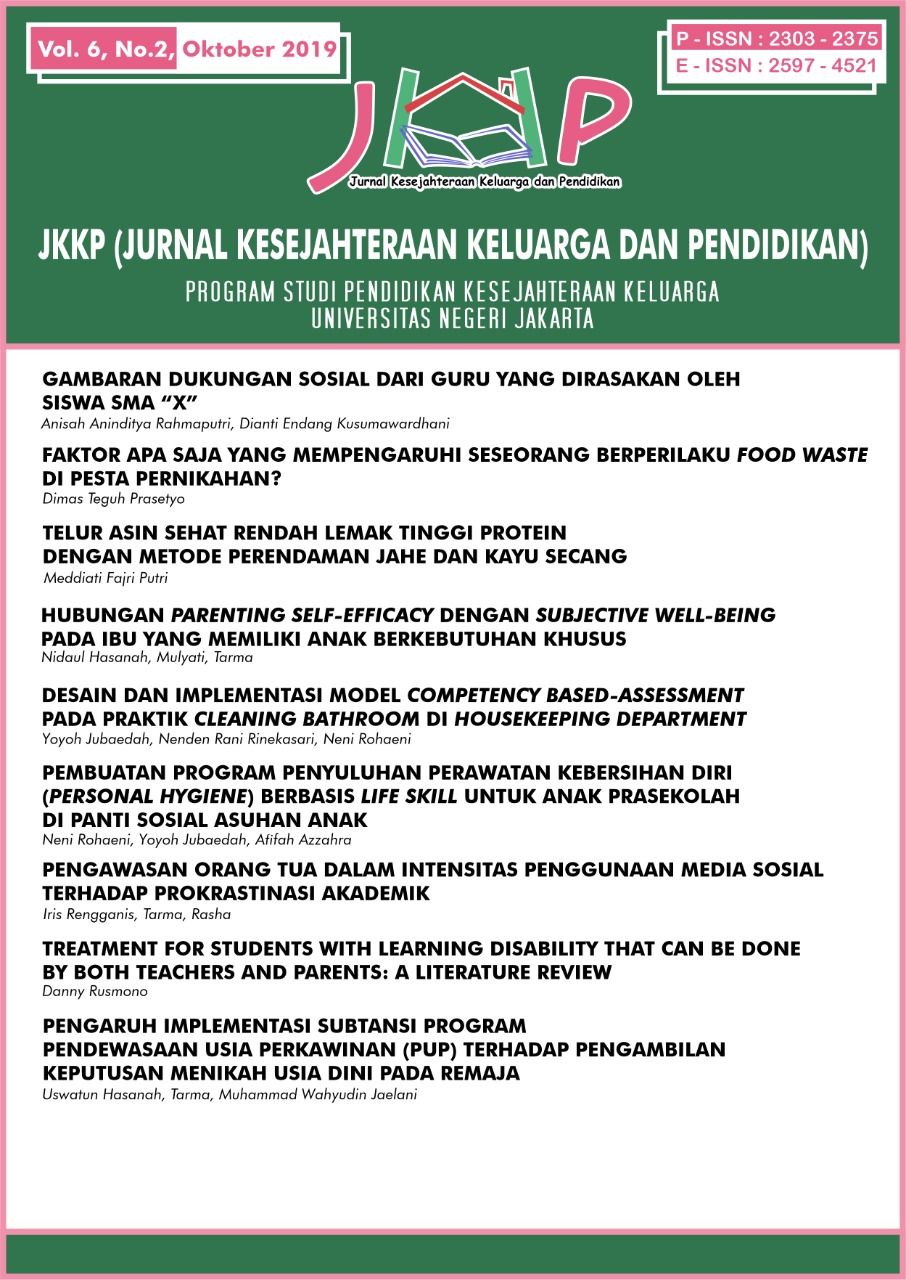TELUR ASIN SEHAT RENDAH LEMAK TINGGI PROTEIN DENGAN METODE PERENDAMAN JAHE DAN KAYU SECANG
Abstract
Salted eggs are one of the products that people like. The principle of making salted eggs is the process of ionizing NaCl salts which then diffuses into the egg through the shell pores (Wulandari et al. 2014). The purpose of making salted eggs is as an effort to preserve, in addition to increasing the taste of eggs. Egg salting is a technology of processing livestock products which is often used to maintain egg quality because the manufacture is easy and economical so it has quite a lot of enthusiasts. The community uses duck eggs for the salting process, because duck eggs have large pores and fishy taste, so they are good for salted eggs. The time of salting is very influential in the shelf life of the egg the longer the salting time the longer the shelf life of the egg. The purpose of this study was to determine the fat content and protein content of healthy low-fat salted eggs. The salting method includes the method of wet salting and the dry method. Salting with a dry method is done by closing the egg shell with 2 collisions of bricks and salt in the form of a paste dough, salting with immersion method by immersing the egg with a salt solution. The method used was soaking ginger and secang wood, followed by analysis of protein content using the semimicro kjeldhal method and fat content analysis using extraction methods using Soxhlet. The total fat content of the research results from salted eggs after treatment decreased by 0.34 g - 0.25 g = 0.09 grams (4.5%). And the protein content in salted eggs increased from 21.79% to 26.25%. For that reason, it can be recommended that the salted eggs from the research results be healthier to be consumed in terms of the levels of fat and protein produced.
Abstrak
Tujuan dari pembuatan telur asin adalah sebagai upaya untuk pengawetan, selain itu juga untuk meningkatkan cita rasa dari telur. Pengasinan telur merupakan teknologi pengolahan hasil ternak yang sering digunakan untuk menjaga kualitas telur karena pembuatannya yang mudah dan ekonomis sehingga memiliki peminat yang cukup banyak. Masyarakat menggunakan telur bebek untuk proses pengasinan, karena telur bebek mempunyai pori - pori yang besar dan rasa amis, sehingga baik digunakan untuk telur asin. Waktu pengasinan sangat berpengaruh pada masa simpan telur semakin lama pengasinan semakin lama masa simpan telur. Tujuan penelitian ini untuk mengetahui kadar lemak dan kadar protein pada telur asin sehat rendah lemak. Metode pengasinan meliputi metode pengasinan basah dan metode kering. Pengasinan dengan metode kering dilakukan dengan penutupan kulit telur dengan 2 tumbukan batu bata dan garam dalam bentuk adonan pasta, pengasinan dengan metode perendaman dengan cara merendamkan telur dengan larutan garam. Metode yang digunakan perendaman jahe dan kayu secang, dilanjutkan dengan analisa kadar protein menggunakan metode semimikro kjeldhal dan analisa kadar lemak menggunakan metode ekstraksi menggunakan soxhlet. Total kadar lemak hasil penelitian yang terdapat dari telur asin setelah perlakuan mengalami penurunan sebanyak 0,34 g – 0,25 g = 0,09 gram (4,5%). Dan kadar protein pada telur asin hasil penelitian mengalami peningkatan dari 21,79% menjadi 26,25%. Untuk itu dapat direkomendasikan bahwa telur asin hasil penelitian lebih sehat untuk dapat dikonsumsi ditinjau dari kadar lemak dan protein yang dihasilkan.
Authors who publish with this Journal agree to the following terms:
- Author retain copyright and grant the journal right of first publication with the work simultaneously licensed under a creative commons attribution licensethat allow others to share the work within an acknowledgement of the work’s authorship and initial publication of this journal.
- Authors are able to enter into separate, additional contractual arrangementfor the non-exclusive distribution of the journal’s published version of the work (e.g. acknowledgement of its initial publication in this journal).
- Authors are permitted and encouraged to post their work online(e.g. in institutional repositories or on their websites) prior to and during the submission process, as it can lead to productive exchanges, as well as earlier and greater citation of published works.
Users/public use of this website will be licensed to CC BY SA
![]()







